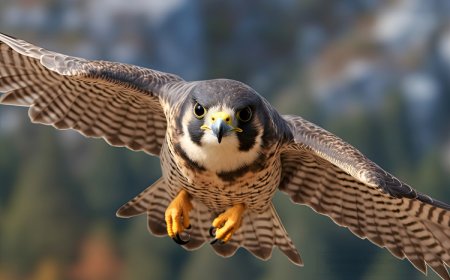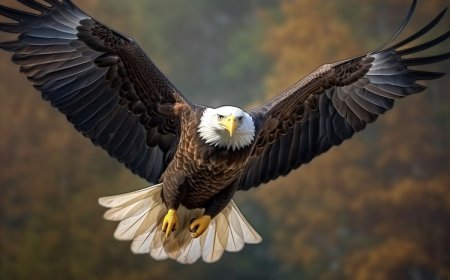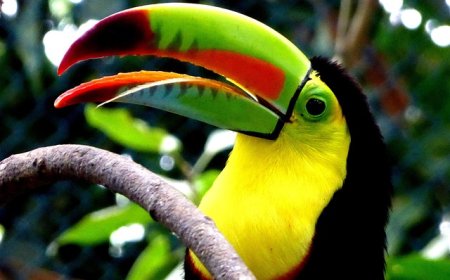Red-tailed Hawk Facts for Kids: Diet, Nesting, and Adaptations
Learn about red-tailed hawks in this kid-friendly guide. Discover their diet, hunting skills, nesting habits, and why they are so successful.
🦅🌳 Red-tailed Hawks: The Watchful Hunters of the Sky
Red-tailed hawks are among the most common and easily recognized birds of prey in North America. These powerful raptors are famous for their broad wings and beautiful rusty-red tails. If you’ve ever seen a large hawk soaring high in the sky or perched on a telephone pole, it was likely a red-tailed hawk.
Known for their loud, piercing scream often used in movies to represent any eagle or hawk, red-tailed hawks are skilled hunters that play an important role in keeping rodent populations under control.
🧬 Scientific Classification
Red-tailed hawks belong to the Accipitridae family, which also includes eagles and other hawks.
Classification:
Kingdom: Animalia
Phylum: Chordata
Class: Aves
Order: Accipitriformes
Family: Accipitridae
Genus: Buteo
Species: Buteo jamaicensis
The species name jamaicensis comes from the first specimen described from Jamaica, though the hawk is found all over North America.
🦅 Description and Adaptations
Red-tailed hawks are large, stocky raptors with wide wings and a short, broad tail.
Size and Features:
Length: 18–26 inches (45–65 cm)
Wingspan: 3.5–4.8 feet (1.1–1.5 m)
Weight: 1.5–3.5 pounds (0.7–1.6 kg)
Adults have brown backs, pale bellies with dark streaks, and a reddish-brown tail that gives the species its name. Juvenile hawks have brown, banded tails until they grow their adult plumage.
Adaptations:
Excellent eyesight—about 8 times sharper than humans.
Powerful talons to grab and hold prey.
Broad wings that allow them to soar effortlessly for hours.
Hooked beak to tear apart their food.
🌎 Habitat and Range
Red-tailed hawks are highly adaptable and live in many types of environments.
Habitats Include:
Open fields and grasslands
Forest edges
Deserts
Urban and suburban areas
Range:
Found throughout North America, from Alaska and Canada down to Panama and the West Indies.
These hawks are often seen perched on fence posts, utility poles, and highway signs, watching for prey.
🐁 Diet and Hunting Behaviors
Red-tailed hawks are carnivores that eat a wide variety of animals.
Typical Diet:
Mice and voles
Rabbits and squirrels
Snakes and lizards
Occasionally birds
They hunt by soaring in circles high above the ground, using their sharp eyesight to spot movement below. When they see prey, they swoop down quickly and grab it with their talons. Sometimes they also hunt from a perch.
🪺 Reproduction and Nesting
Red-tailed hawks are monogamous and usually return to the same nesting territory each year.
Nesting Facts:
Nests are built high in trees or on cliffs.
Made of sticks and lined with bark, leaves, and softer materials.
The female lays 1–3 eggs in early spring.
Both parents take turns incubating the eggs for about 28–35 days.
Chicks fledge after 6–7 weeks but may stay near the nest for a while.
🛡️ Conservation Status
Red-tailed hawks are one of the most successful raptors in North America. Their population is stable and even growing in some places because they adapt well to human environments.
They are protected under the Migratory Bird Treaty Act, which makes it illegal to harm or capture them without special permission. Overall, they are listed as Least Concern.
✨ Fun Facts About Red-tailed Hawks
Their scream is so iconic it is often used in movies to represent any bird of prey.
Red-tailed hawks can live over 20 years in the wild.
In some Native American cultures, their feathers are considered sacred.
They can spot a mouse from over 100 feet in the air.
Pairs perform acrobatic flights during courtship, including spiraling dives.
📝 Kid-Friendly Summary
Red-tailed hawks are large, powerful birds that live all over North America. They have a reddish tail, wide wings, and excellent eyesight for hunting rodents and other small animals. Red-tailed hawks build nests high up in trees, and both parents care for the chicks. They are very common and protected by law.
🧠 Vocabulary Words
Word Definition
Raptor A bird of prey with sharp talons and a hooked beak.
Monogamous Having one mate for life.
Carnivore An animal that eats other animals.
Incubate Keeping eggs warm until they hatch.
Fledge When young birds leave the nest and learn to fly.
Territory An area that an animal defends against others.
Plumage A bird’s feathers.
Adaptation A special feature that helps an animal survive.
Talon A sharp claw used for catching prey.
Conservation The protection of animals and their habitats.
🎲 Interactive Quiz
Multiple Choice Questions
What is the red-tailed hawk’s main food?
A) Fish
B) Fruits
C) Small mammals like mice and rabbits
D) Flowers
What is special about the red-tailed hawk’s tail?
A) It is blue.
B) It is bright red when mature.
C) It has no feathers.
D) It is longer than its wings.
Where do red-tailed hawks often build nests?
A) Underground
B) On cliffs or in tall trees
C) In caves
D) Under bushes
What law protects red-tailed hawks in the U.S.?
A) Bald Eagle Act
B) Bird Safety Law
C) Migratory Bird Treaty Act
D) Hawk Conservation Rule
What is a group of red-tailed hawk chicks called?
A) Flock
B) Clutch
C) Brood
D) Litter
True or False Questions
Red-tailed hawks are endangered.
True / False
Both parents help incubate the eggs.
True / False
Red-tailed hawks can live in cities.
True / False
They mainly eat fruits and plants.
True / False
They have excellent eyesight.
True / False
Answer Key:
1–C, 2–B, 3–B, 4–C, 5–C, 6–False, 7–True, 8–True, 9–False, 10–True
🎨 Visual Aids Suggestions
Photo of an adult red-tailed hawk perched
Diagram of hawk anatomy
Map of North American range
Illustration comparing juvenile and adult tails
Chart of common prey items




















































